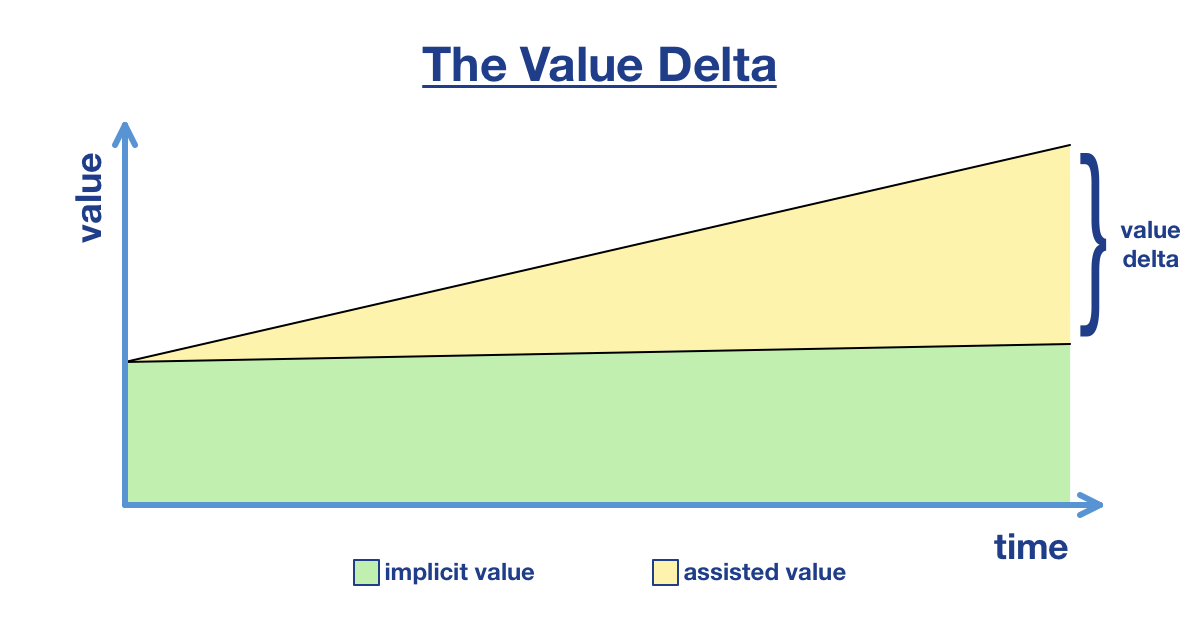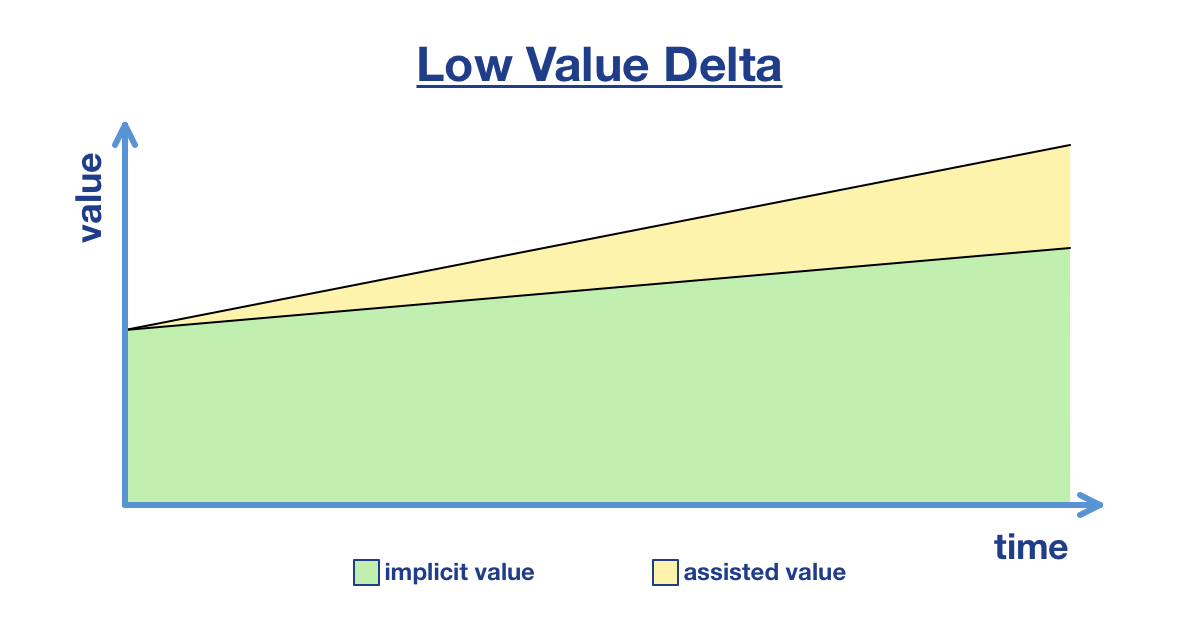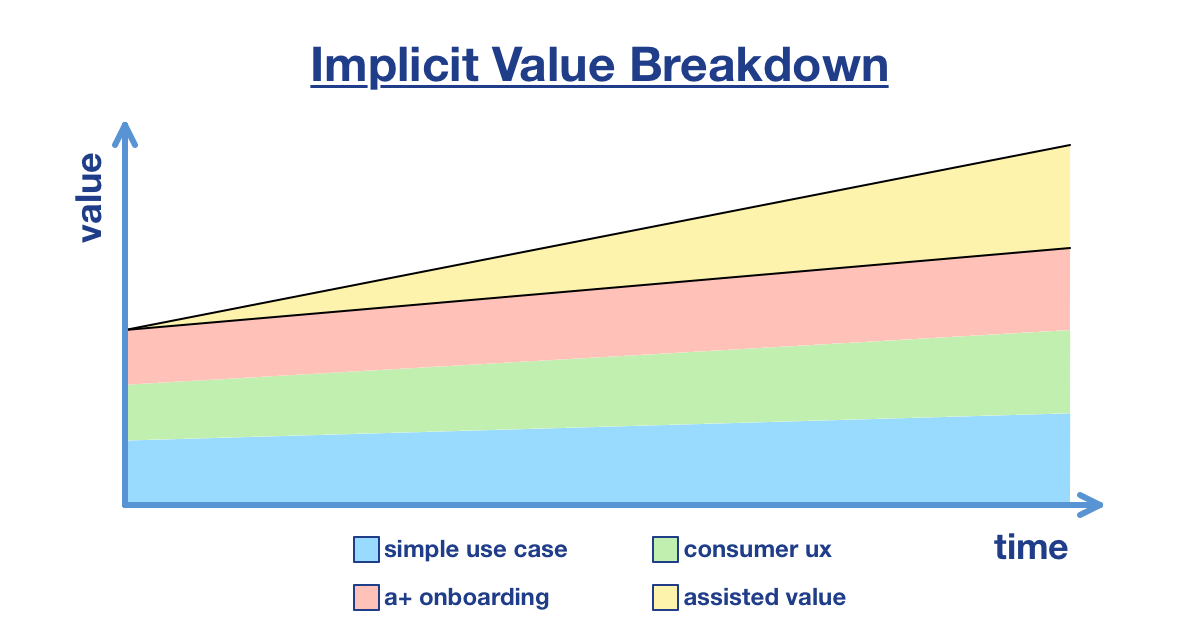The Value Delta : A Fresh Perspective On Value In Customer Success
Customer success is primarily about value. That value can be expressed as a financial return on investment (ROI) or as a set of vendor specific value metrics. Any organisation with a true focus on customer success will always be searching for ways to increase the value they provide to every customer.
This leads to two questions:
- Where do we search for value?
- How do we optimise its delivery?
To help shed some light on the first of these questions and offer a framework to help answer the second we’re introducing the idea of the value delta.
At it’s simplest the value delta is the difference between the implicit value offered by a product and the full amount of value ultimately available given targeted and effective vendor assistance. This is shown below.

The implicit value is the value your customer would realise if left, over the long term, to their own devices. In other words they purchase your product, onboard using your standard service offering and then, other than technical support and sales calls, they don’t hear from you again. It’s the baseline of readily accessible value in your product.
The assisted value is the value your customer needs vendor support to fully unlock. That support might be as simple as ensuring they keep their eye on the prize and continue to invest in the success of the solution. Or more commonly it’ll mean the vendor’s customer success management team providing the proven advice, guidance and best practices that experience has shown get overlooked or are hard to understand without support or have to be learned at a level of cost in time and effort that prove too large a hurdle to leap unsupported.
The value delta then is simply the total area shaded here in yellow. It’s all of the assisted value, unlocked over time, by effective customer success management.
It’s immediately obvious that this varies by solution. Take a product like Zoom. Zoom cracked the code on ease of use by taking most of the complexity and friction out of hosting conference calls. An organisation can get at a great deal of the value offered by Zoom on its own. Zoom has a low value delta.

At the other end of the scale are products that can require considerable ongoing vendor support to unlock all of the available value. This may be due to domain complexity meaning a product with an extensive feature set. Or the product may require significant and challenging change management initiatives. Examples of this can include RPA and CRM. These are high value delta products.

All of which leads to a couple of interesting observations.
Firstly solutions or products with a low value delta won’t normally require a great deal of customer success management. Whereas products with a high value delta offer a huge opportunity for the vendor who invests in building a world class customer success capability.
Secondly what sits in the implicit value and what sits in the assisted value? In other words if a customer success focused organisation is to be maximally effective it needs to clearly understand the difference between their solution’s implict and assisted value and then figure out how to do two things:
- Reduce the value delta over time, or in other words increase the implicit value and;
- Optimise its customer success function to focus on delivering the value delta as efficiently as possible
Increasing implicit value can be done in many ways. The opportunities to do so vary by solution and by the resources available to any given vendor. But, for example we can take a simplified look at a company and conclude there are three elements that contribute to their implicit value:
- The simplicity of the overall use case. Zoom is a great example of a company that benefits from this.
- The quality of their UX, here shown as a company having consumer grade usability
- The quality of the initial onboarding process. Here we assume the value from building understanding and momentum early in the life of a customer is sustained over time.

While it’s clear not much can be done, other than perhaps through thought leadership and time, to simplify the use case, any company can focus on improvements to UX and onboarding. Both of these build implicit value and consequently allow customer success to focus on the high value activities associated with unlocking the value delta.